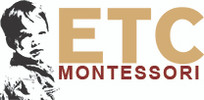
As a consultant and trainer, I often have conversations with and ask questions of teachers regarding the placement of new students who have not had previous Montessori experience. To be fair, their answers are different depending on which level the teacher is working in, but I’m still surprised when the response comes back, “Why, at the beginning, of course! The child needs these skills before I can move them on!”
I understand, really, I do. And so, let’s look at the reality of what this child needs. We are taught in our Montessori training that the materials and presentations are sequenced to move from concrete to abstract, and simple to complex; this is one of the reasons why the presentations help children learn so well. However, I believe there is another element that is often ignored but needs to be taken into consideration: the developmental level of the child.
We can look at any part of the Montessori curriculum and delineate those materials that move from simple to complex (multiple examples of transfer exercises using whole hand, scoops, spoons, tongs, tweezers, and any other tool that can be used to develop fine motor control) and concrete to abstract (golden beads, stamp game, dot board, bead frame). So why when a new student enters our classrooms at age 5, and has not participated in the multiple transfer activities, do teachers think that they need to start at the beginning? If they were to observe the child working in the Practical Life area, they may actually see that the child is mindlessly moving one object from one bowl to another, missing the actual purpose of the activity. This is because this activity is for a much younger child. I think what confusing teachers is that we have also seen the benefits of isolation of difficulty in the young child. But here’s the thing, isolation of difficulty is only part of the equation. At some point, the child needs to integrate these skills as a part of further learning.
Eric Jensen, in the first edition of Teaching With the Brain In Mind states,
“Patterning information means really organizing and associating new information with previously developed mental hooks. Using pattern detection and pattern-making areas of the brain is critical to proper development. Children who don’t learn to search for meaning are often a good ‘technician’ in the 1st and 2nd grade because they can deal with isolated data, but when the demands for comprehension increase, they ‘hit the wall’. They simple can’t assemble it and make sense out of it.”
This is where developmental level plays a part of our assessment on how to place a child into the curriculum sequence. We know the physical and cognitive aspects of a presentation and we need to use this information in our placement strategies.
If you have a 5-year-old that needs to work on fine motor control, design a science classification activity that uses forceps (ok, they’re really tweezers) to move the objects. But don’t stop there, because this same child will probably need some work with beginning reading. Have this same child label the categories in their classification work and read them back to you. You are now able to assess this child’s ability to sort using a classification system, his ability to hear, isolate, and utilize sound/symbol association, and his ability to encode isolated sounds to form a word. Isn’t that really what you want to know about this new child? Also, if you have collected a set of objects that have a scientific classification (animals of different classes, vertebrate/non-vertebrate, carnivore/herbivore/omnivore) the child has begun his own investigations into scientific classification, and maybe, if you’ve “hooked” the child, they will repeat the activity and move faster into the nirvana of normalization!
For the older child in the elementary program, understanding the geometric progression of place value is a wonderful “ah-ha”, if they have not seen it before; but that does not mean that a third grader needs to begin with golden beads. There is a reason 8- and 9-year-olds like the stamp game, and the checkerboard. These materials fit their developmental level. Gone are the days when a child will “walk the beads” and if you tell the child to sit next to the shelf where the golden beads are placed, just so they don’t have to walk, think about what you are asking! Instead, make the association between the golden beads and the stamp game, and move on. The importance of place value is imperative to attaining abstraction in operations, but using a developmentally inappropriate material delays the acquisition of more advanced materials and possibly keeps the child at a remedial level. Instead, spend more time asking higher level questions on developmentally appropriate material so you can understand how this child thinks. Verbal assessment questions like “If I place this 4 bead on the green square in the thousand’s family, how is this different than the green square in the million’s family?” will give you insights into that child’s understanding of place value far more than working with the golden beads.
Dr. Montessori was aware of these difficulties and addressed them in Shelia Radis’ book, The New Children; talks with Maria Montessori,
“Many failures to interest the children come from presenting the materials at the wrong age. It is just as difficult for the mind to hark back to an earlier stage as to strain forward to one that is too advanced.” (Page 31)
It is our job as Montessori teachers to not only understand how to present the lessons, but how to place children appropriately in the sequence so they grow to their full potential in ways that are developmentally appropriate.

